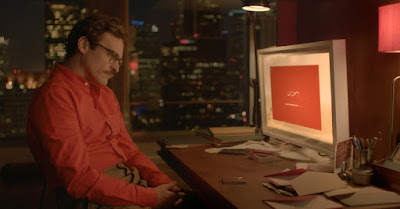Characteristics Of A Postmodern Film
- Bricolage: the process of assembling artefacts from bits and pieces of other things
- Genre Cross-Over
- recycling old forms
- mixing high and low culture (kitsch)
- Intertextuality: the multiple ways in which a text is entangled with or contains references to other texts
- Pastiche (copying in tribute) and Parody (copying in jest)
- Style over content; the image and visual excitement over narrative coherence
- Confusions over time and space; the subversion of classical cinematic conventions; fragmented narratives; time-bending.
- Self-reflexiveness / self-referentiality: texts that openly reflect upon their own processes of artful composition.
- Metafiction: fiction that deals, often playfully and self-referentially, with fiction and its conventions
- Flattening of Affect: Technology, violence, drugs and the media lead to detached, emotionless lives
- Hyperreality: Technologically created realities are often more authentic or desirable than the real world
- Altered States: Drugs and technology provide a darker, sometimes psychedelic, gateway to new internal realities
- More Human than Human: Artificial intelligence, robotics and cybernetics seek to enhance or replace humanity
Features of postmodern films
- Pastiche
- Self-referential, tongue-in-cheek, rehashes of classic pop culture
- Flattening of Affect
- Technology, violence, drugs, and the media lead to detached, emotionless, unauthentic lives
- Hyperreality
- Technologically created realities are often more authentic or desirable than the real world
- Time Bending
- Time travel provides another way to shape reality and play "what if" games with society
- Altered States
- Drugs and technology provide a darker, sometimes psychedelic, gateway to new internal realities
- More Human than Human
- Artificial intelligence, robotics, and cybernetics seek to enhance, or replace, humanity
Postmodern ideas
- We no longer have any sense of the difference between real things and images of them, or real experiences and simulations of them.
- The distinction between media and reality has collapsed, and we now live in a ‘reality’ defined by images and representations – a state of simulacrum.
- Postmodernism rejects the idea that any media product or text is of any greater value than another. All judgments of value are merely taste.
- Culture ‘eats itself’ and there is no longer anything new to produce or distribute.
- All ideas of ‘the truth’ are just competing claims – or discourses – and what we believe to be the truth at any point is merely the ‘winning’ discourse.
- Postmodern texts are said to be intertextual and self-referential – they break the rules of realism to explore the nature of their own status as constructed texts.
In the postmodern world, media texts make visible and challenge ideas of truth and reality, removing the illusion that stories, texts or images can ever accurately or neutrally reproduce reality or truth


Comments
Post a Comment